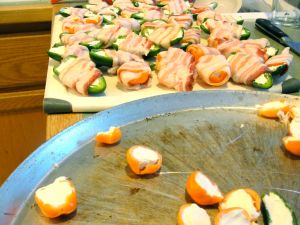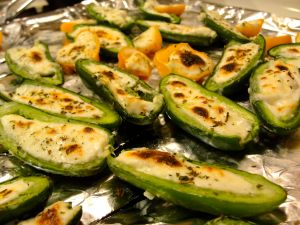
I’ve not posted many recipes in the past few years, in part, because I’ve largely focused on learning to smoke meats and vegetables. It takes time to develop expertise and there are a plethora of expert smoking sites and YouTube channels that do a great job of sharing techniques and recipes (links below). I felt I had little that’s novel to share.
That changed when a bacon-making friend inspired me to smoke bacon and I had a new idea: Why not make “Canadian bacon” or back bacon in strips like “American” bacon or streaky bacon?
You likely know Canadians typically serve round slices of what’s called “back bacon” that is made from pork loin and Americans serve strips of what’s called “[streaky] bacon” that is made from pork belly. So, the obvious answer to “Why not?” is that a pork loin is roughly cylindrical and easily sliced into rounds once cooked, and a pork belly is flat, easily formed into a rectangle, and sliced into strips once cured.
But bacon isn’t about making something quick and easy – it’s about making something great, e.g., typically with a week-long cure in sugar and salt then a low and slow smoke. Note there are many pork loin preparations other than rounds such as a roulade a.k.a. rollade (Dutch). Why not cut pork loin as if for a roulade, but then cure and smoke it flat and cut into strips? That’s what we’ll do!
Here, I show a typical process of making nitrite/nitrate-free “uncured” bacon, but modified to result in back bacon strips. I say “uncured” because, although a salt/sugar cure is performed, it is my understanding that the U.S. federal government stipulates this be called “uncured” when not prepared using nitrates (nor possibly even nitrites) for meat preservation. What I show, here, is safe preparation method because (a) the bacon is cured in the refrigerator and (b) the resulting bacon fully cooked. If you’d rather use curing salts, e.g., carefully measured Prague powder #1, go for it! If you do, consult some other recipe or instructions since nitrite/nitrate curing salts are poisonous if accidentally used in excess.
Even if you change the cure ingredients, the rest of the process below is the same.
I’ve made this bacon a couple times and think it’s great. Why? Well, back bacon strips are meatier but still have lots of sweet, smoky bacon flavors like from traditional bacon strips. I attribute this largely to the dramatically increased surface area that the flat, rectangular roulade-style pork loin cut offers during curing and smoking leads to more flavor being imparted.
Cut

Cut a pork loin into sections and trim the exterior fat as you desire. (You will fully cook the bacon during the smoking step, as in traditional back bacon preparation, so personal preference rather than food safety is your guide in trimming the fat.) The length of each resulting pork loin section determines how many slices you can make from each “flat.”
Next, for each section you will use to make bacon, make a long spiral cut through the section with the knife’s blade aligned lengthwise along the section. The loin’s circumference and the thickness your cutting leaves determines how long your bacon slices will be. This is because you will ultimately slice the bacon strips across the meat’s grain. For the spiral cut, I use a sharp, pointed chef’s knife but you could probably also manage it with a sharp or serrated meat slicing knife as well. Be careful not to leave the resulting flat piece too thin; 1 inch thick is just about right.
If the resulting flat is uneven in thickness, carefully thin it in places by hitting it with a meat mallet until roughly even in thickness. If you’ve not made a roulade before, I suggest watching some YouTube videos showing this cutting method. Don’t worry if the flat isn’t perfectly evenly thick nor exactly square; variety will give the resulting bacon some organic, natural character. Just cut and shape it slowly so you don’t leave divots or holes which will result in short, unevenly cooked bacon strips.

Cure
For a flat piece of the size shown (about 10 inches square), prepare a simple paste/mixture consisting of (a) 1/3 cup salt, (b) 1/3 cup brown sugar, and (c) 1/3 cup pure Maple syrup. Smear the mixture on the pork loin flat and place it in a sealed container, such as a gallon-sized Ziplock bag, removing air if possible. Be sure the mixture coats both sides of the flat, and place in the refrigerator for about 1 week.
Once each day while curing, flip the flat over, distributing the cure mixture and liquids to contact all portions of the flat.
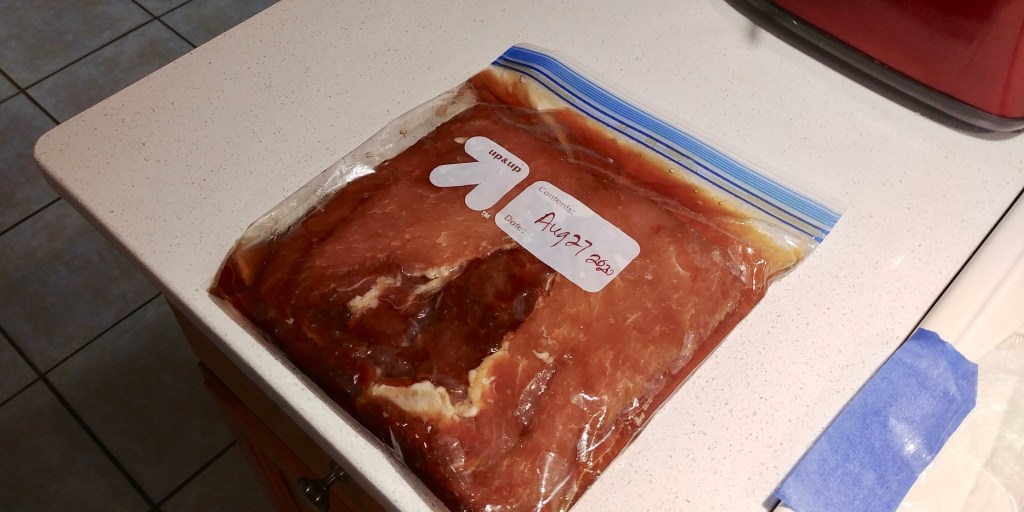
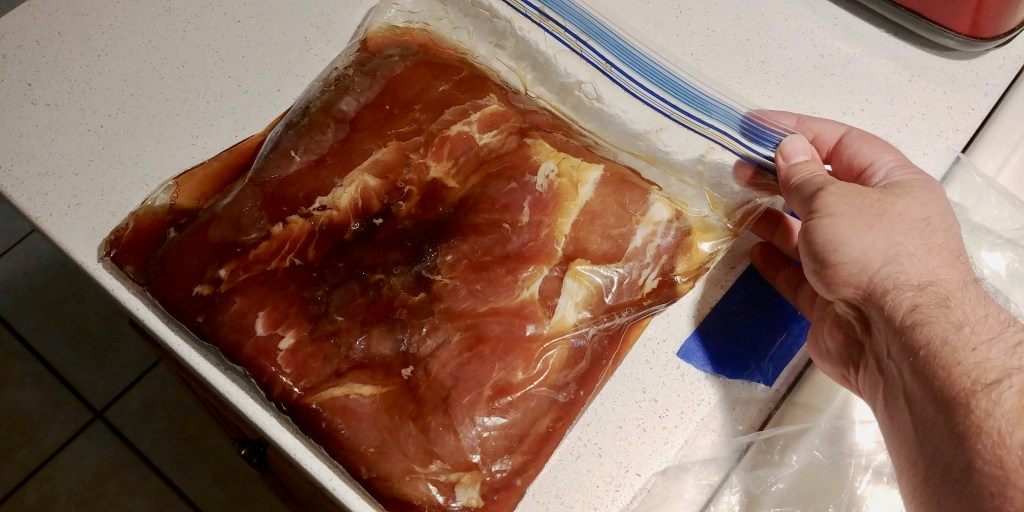
Dry
After about 1 week’s time curing, it’s time to prepare the flat(s) for smoking.
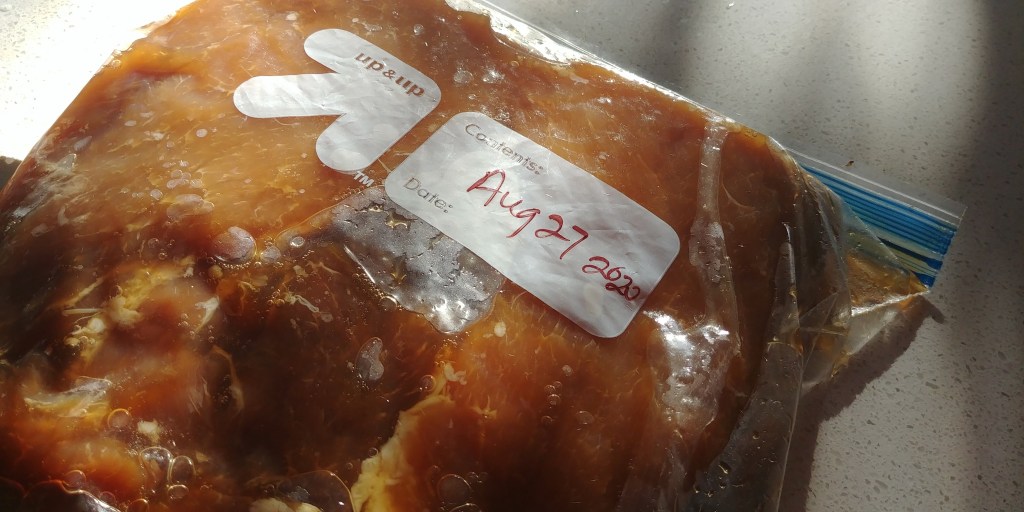
Rinse all the cure mixture from each pork loin flat and pat them dry.

Once rinsed and patted dry, place each flat on a wire rack, and return to refrigerator to dry for about one day.
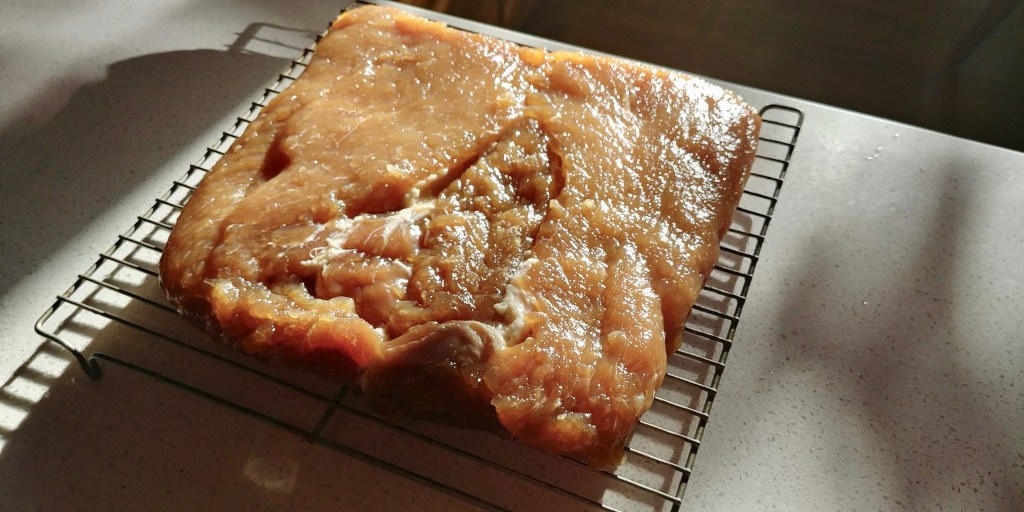
To be honest, I’m not sure this drying step is necessary, but it is a common step in traditional bacon recipes. Instead, it seems to me the flat could be dried in an initial, short cold smoke (to also impart more smoke flavor) or during the hot smoke/cooking process. This might even leave the interior a bit moister, if desired.
Smoke
Once dried, the flats are ready to smoke. If you don’t smoke meats, I suppose you could just cook this low and slow in the oven; I’ve not tried.
I happen to smoke foods in my gas grill using a cold smoke generator and I suggest smoking on Hickory or Maple, here.

There are lots of time/temperature combinations that would work. The goal is to slowly cook the cold meat to greater than 160°F, internally throughout. For example, smoke at about 225°F for about 2.5 hours. Rotate the flat periodically to cook more evenly.

Use an instant read thermometer, probing many locations, to assure 160°F throughout.
Be sure to use a thermometer, preferably instant read, to check the internal temperature throughout the flat, in different places during the cook. Since it is a relatively thin piece of meat, it will reach higher temperatures faster near the heat source and edges if you’re cooking with indirect heat.

Once smoked, the pork loin flat, now bacon, proper, develops beautiful color. It’s time to let it rest to cool, then place in the refrigerator for slicing. I tightly wrap it in aluminum foil for a few hours in the refrigerator. You can reuse the foil to wrap packs of slices.
Slice
Once refrigerated and firm, it’s time to slice your bacon to desired thickness.
I can get straight, near perfect slices, just like store bought bacon, by using a flexible, sharp, serrated carving knife.
Hold the bacon flat down firmly to a cutting board with your non-knife-holding hand. Then, for each slice, place the blade edge down to the top of the flat, straight and at the desired thickness. Slowly slice straight down with even back-and-forth motion. Go slowly! You just spent a week making this and bacon slice appearance is important!
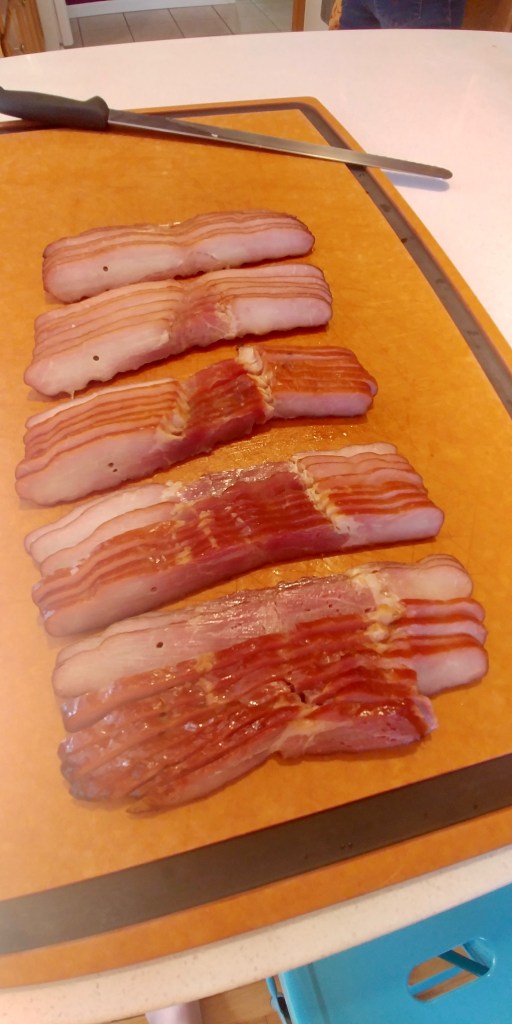
Serve
Store your back bacon strips tightly-wrapped as you would other bacon. To reduce air contact, I wrap it tightly in aluminum foil, then place in a new Ziplock storage back.
Since it’s fully-cooked, back bacon strips can be eaten as a cold snack. Otherwise, serve it warmed in a fry pan or on a griddle like bacon strips.
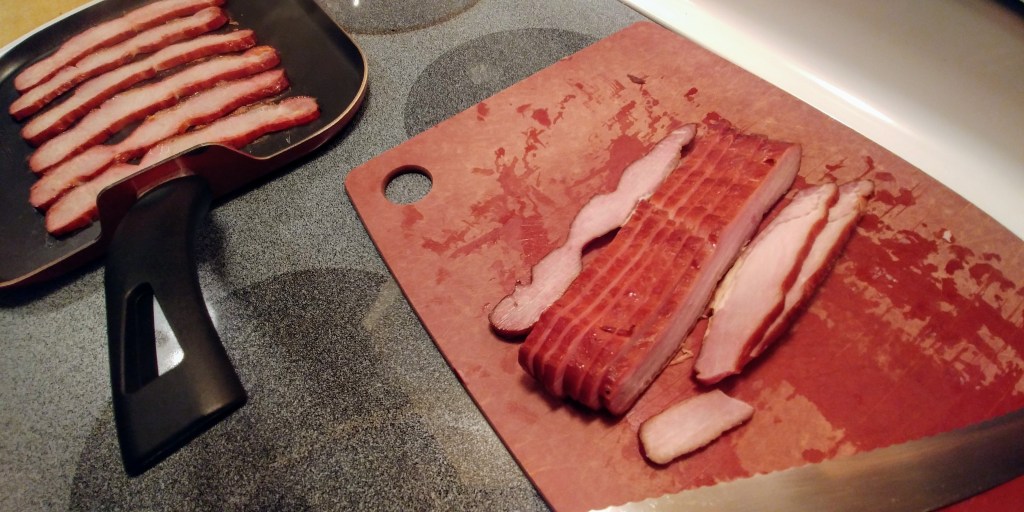
Since back bacon strips are leaner than typical bacon strips, you might like to fry it in a bit of water. This keeps it from sticking to the pan, due to the released sugars while also keeping it moist for serving.
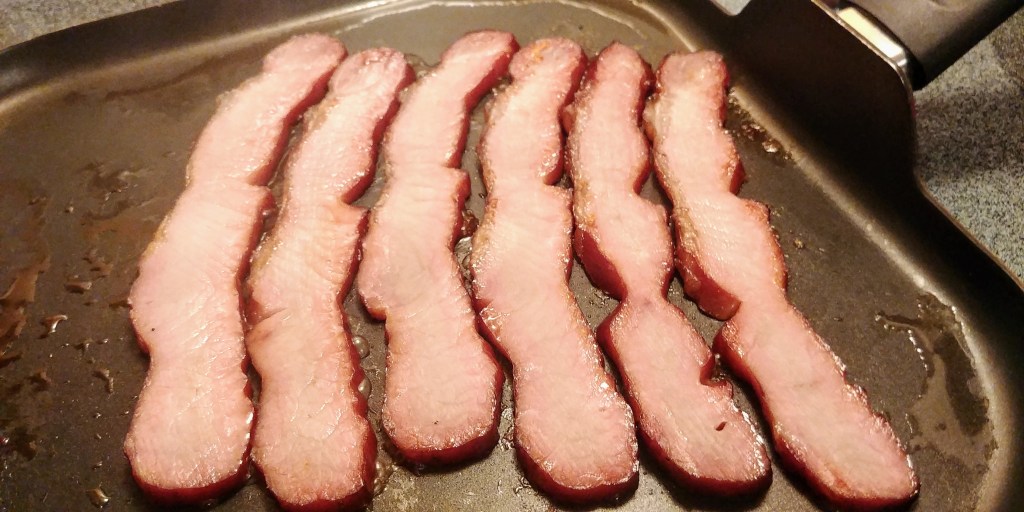
Note that frying can make the smoke ring more distinct. Remember, this is uncured bacon, so the pinkness (shown in photos) is not from curing salts but from the wood combustion gases interacting with the meat’s surface while smoking.

Lastly, it makes a great B.L.T.!

Please let me know if you try this and make your own back bacon strips!
Also, do let me know if you’ve heard someone invented and/or sold back bacon strips made from pork loin before. To the best of my knowledge, I invented back bacon strips, but am willing to consider that I may have only reinvented this method! :)
Here’s the video with the curing method on which mine is based; I use ~1/3 cup of each ingredient (for one square flat of pork loin) where they use 1/4 cup (for one seemingly smaller square of pork belly):
Curing and Cold Smoking Bacon the Old Fashioned Way
Note that back bacon, though, is fully-cooked to a higher temperature than pork belly bacon!
Peace,
Dave
P.S. Here’s a recipe for another kind of bacon that may be of interest:
Old Fat Guy Cooking: Maple Buckboard Bacon, You Can Make It
UPDATE (25 Sep 2020): Smoked Buckboard Bacon Strips!
I used the same method above, but this time to make buckboard bacon strips.
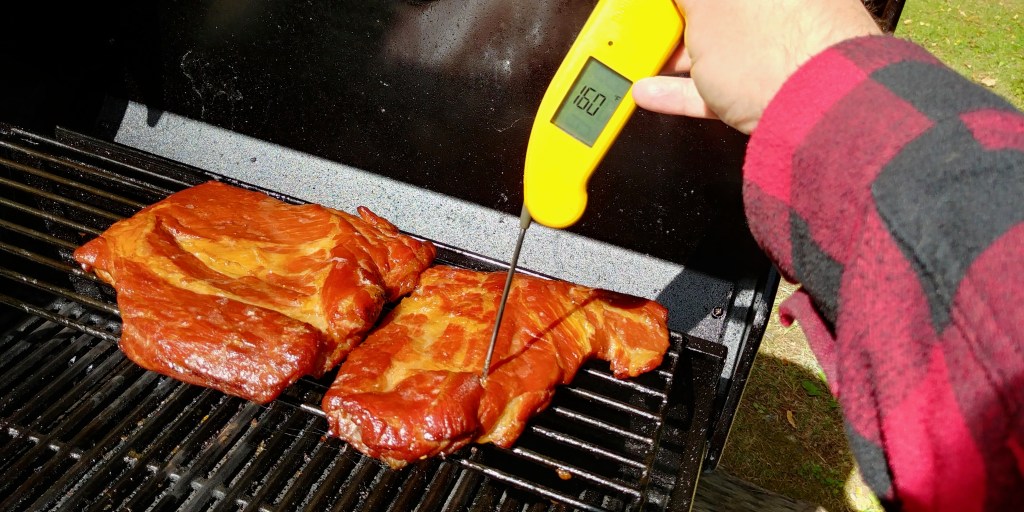
It’s more difficult to make flat, rectangular pieces with a deboned pork shoulder but than it is from pork loin. Also, note that pork shoulder is quite a bit fattier, so the resulting bacon will have about 3:1 meat to fat ratio, whereas bacon from pork loin is nearly all meat. In contrast, American-style belly bacon (“streaky bacon”) often has a 1:3 meat to fat ratio.
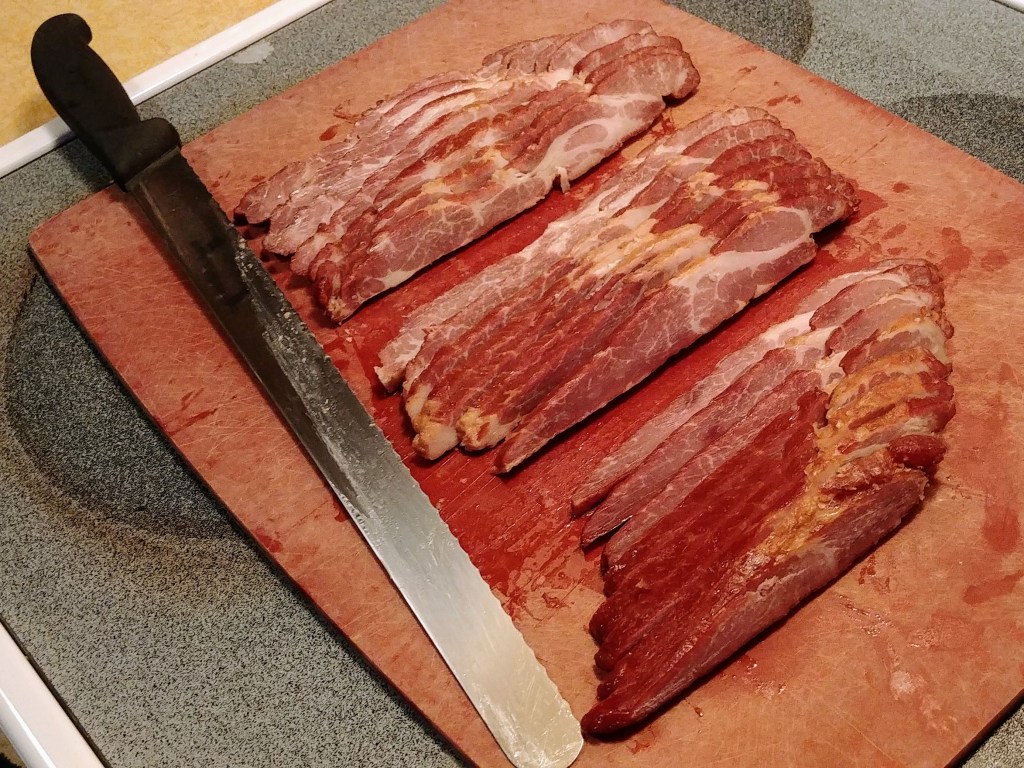
I found these buckboard bacon strips, prepared exactly the same as my back bacon strips above, to be a bit too salty. This is likely because I did not soak them after curing, to reduce the salt content as The Old Fat Guy suggests. Next time, I won’t skip that soak since pork shoulder seems to absorb more salt than does pork loin.
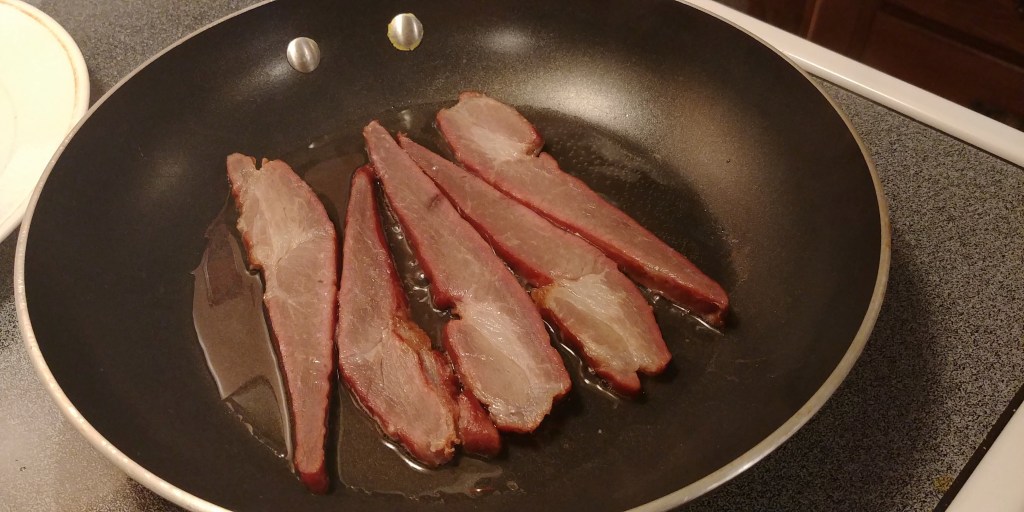
I also suggest pan-frying these strips in about 1/8″ of water since they are much leaner than belly bacon and also because, if you fully-cook the backboard bacon when smoking, you don’t want to lose moisture during frying; you just want to render some of the fat.





